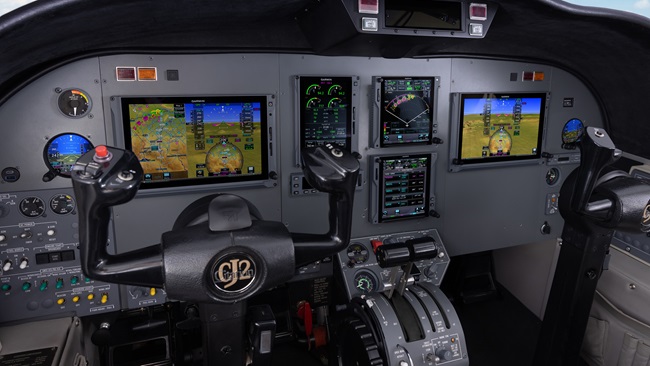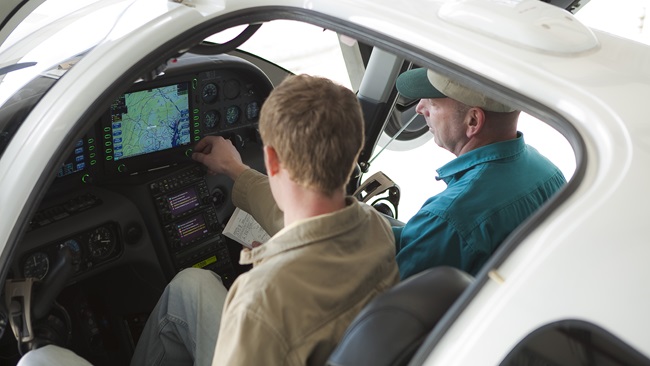Garmin announces two new autopilots
Aftermarket digital autopilot segment gets a boost
The long-languishing aftermarket digital autopilot segment got a big boost July 18 when Garmin International announced not one, but two new autopilots. Both share similar features, but are designed for different market segments. The GFC 500 is geared toward lighter general aviation airplanes that can use a Garmin G5 solid-state attitude indicator as the primary attitude source. The GFC 600 will be of interest to those flying high-performance singles and light twins up through turbine aircraft. The GFC 600 interfaces well with Garmin G500 and G600 glass flight displays, Garmin navigators, and a variety of third-party flight displays.
Both autopilot systems drive servos manipulated by brushless DC motors and a gear train that eliminates the need for a mechanical slip clutch, both of which reduce maintenance and improve reliability and longevity. And both autopilots derive much of their performance from the well-regarded GFC 700 autopilot that Garmin introduced a decade ago to its Garmin G1000 integrated panel; the GFC 700 has since migrated up through a variety of turbine aircraft, but always as a part of an integrated panel, not as a standalone, aftermarket product.
Among the safety-enhancing technologies migrating over to the new products from the GFC 700 are Electronic Stability Protection (ESP)—which nudges the controls toward safety if a pilot hand flying gets near an unsafe condition. If no pilot response is input (as might occur in a pilot incapacitation), the system will activate the autopilot and level the airplane. Continuing the incapacitation scenario, should the airplane then run out of fuel while flying on autopilot, another feature, underspeed protection, would keep the airplane from stalling after the engine quits—in theory keeping the airplane flying under control in a descent just above stall speed all the way to the ground. In general, underspeed protection can help keep the airplane from stalling. It also can be useful when combined with the coupled Go Around function. If a pilot reaches weather minimums for an instrument approach and wants to go around, a touch of the button leaves the autopilot engaged and causes the airplane to pitch up to a climb attitude while cycling Garmin’s GTN navigator into the missed approach procedure. The pilot would only need to apply power and raise the gear and flips. However, if the pilot forgets to add power, the underspeed protection would keep the airplane from stalling in the climb. Garmin officials told AOPA Pilot editors that it was the availability of underspeed protection that convinced the FAA that a coupled go-around could be included in the autopilot.
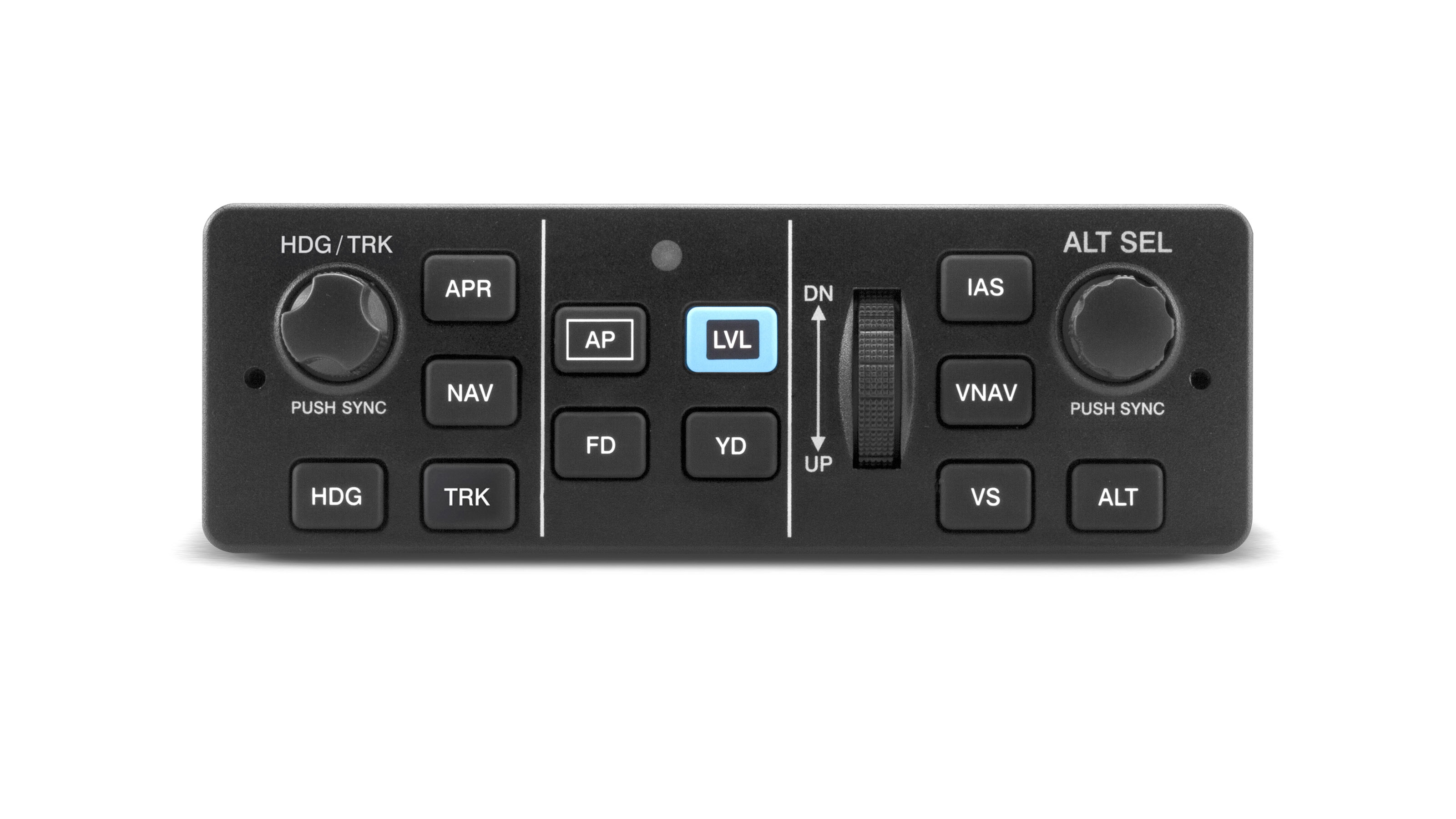
At the opposite end of the flight envelope, overspeed protection will pitch the nose up to prevent the airplane from exceeding its maximum approved speed.
Another feature brought in from the GFC 700 is the Level Mode—the blue button that engages the autopilot to restore the aircraft to straight-and-level flight. Other features that are uncommon in basic GA autopilots are airspeed climb and descent modes. A pilot can select the indicated airspeed desired and the autopilot will pitch the airplane during climb or descent to keep that speed—handy in a terminal area where ATC wants you at a particular speed. Once again, overspeed or underspeed protection will override the choice to keep the airplane safe. Finally, a Flight Director Mode, which assists the pilot in following navigation commands even when the autopilot is not on, is a help in instrument conditions. Vertical navigation functions will be available as future upgrades, according to Garmin.
In addition, the autopilots will fly most any typical instrument approach and related procedures when partnered with a navigator. The addition of a yaw servo provides yaw damping. An optional pitch-trim servo adds automatic trim and manual electric trim capabilities. A control wheel steering (CWS) button is available for the GFC 600, which allows the pilot to adjust pitch, roll, altitude hold, vertical speed or airspeed references using the control yoke.
When connected to a GFC 500 system, the G5 will provide for input and display of altitude preselect, heading, vertical speed target, airspeed target, and flight director command bars. An adapter allows the system to interface with a variety of Garmin GPS and VHF navigators, although such a connection is not required for basic autopilot functions. An autopilot mode controller provides dedicated keys and knobs for various functions and a wheel for managing climbs and descents. Garmin officials say they expect to have an STC for the Cessna 172 in the fourth quarter of this year and the Cessna 182 and Piper PA-28 to follow.
Like the G5, which can be used as an attitude indicator or a directional gyro/horizontal situation indicator (HSI), the GFC 500 system does not meet a technical standard order. In other words, it is non-TSO’d. As is occurring with numerous products now becoming available for production airplanes, non-TSO’d systems can be delivered for much lower costs because of the more limited testing that must be done and less stringent FAA demands regarding software code tracking. That more limited level of testing is partially responsible for the pricing difference between the GFC 500 and 600. The 500 base price of $6,995 is little more than a third of the price of the 600, which starts at $19,995.
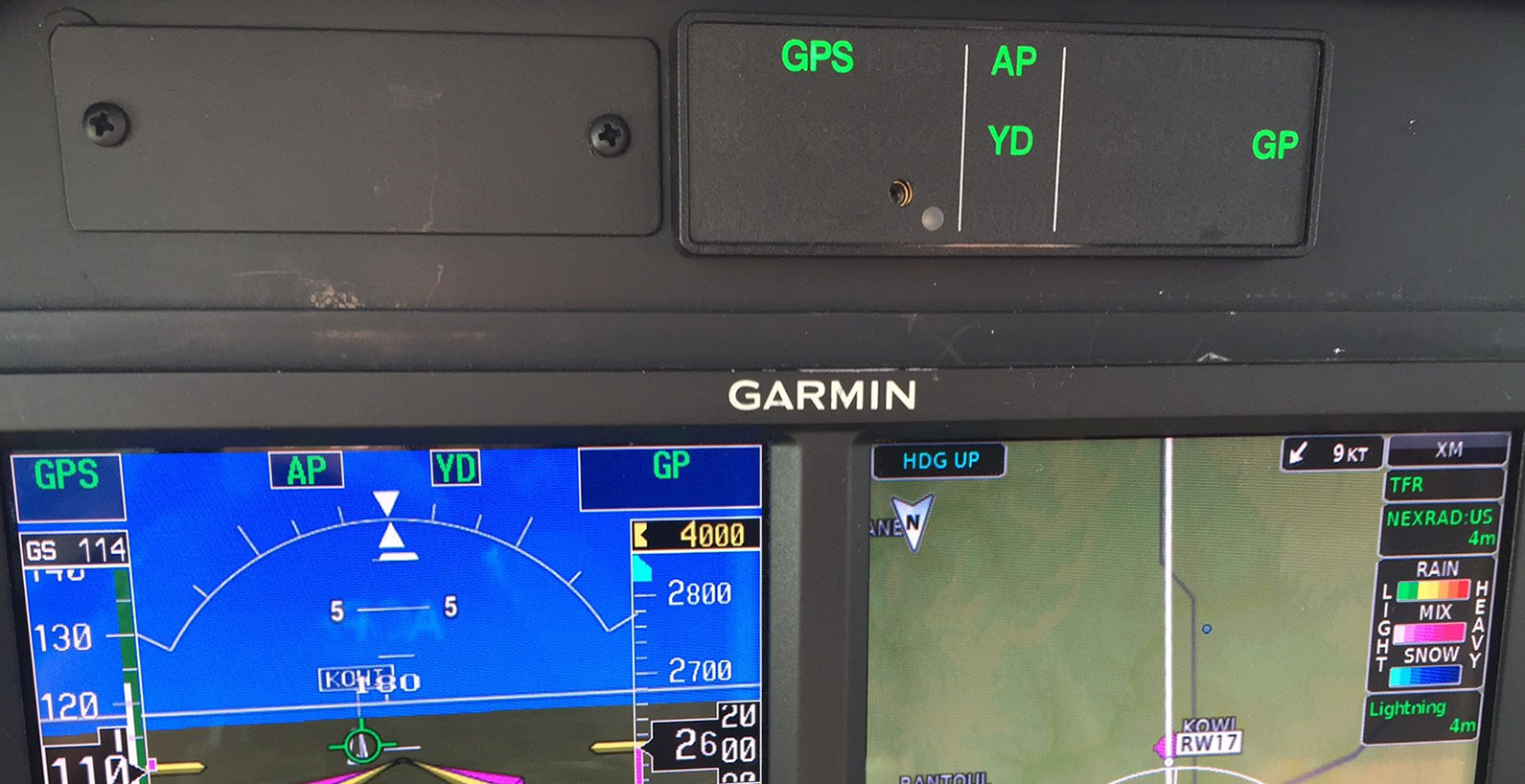
The GFC 600 is, however, TSO’d. In addition to the higher level of approval, the 600 has many more input and output options to interface with a variety of other Garmin and third-party products. Garmin engineers told AOPA Pilot that the beefier GFC 600 servos are sealed and protected against the elements and interference to the same level as those in its Part 25 business jet applications. The GFC 600’s autopilot controller uses a sunlight readable digital display with backlit keys to show autopilot status and for mode selection. An optional autopilot annunciator panel puts the mode status in the pilot’s primary field of view.
Garmin already has the initial supplemental type certificate for installation of the GFC 600 in the Beechcraft A36 Bonanza and B55 Baron; the 58 Baron will follow soon.
As with other new aftermarket autopilots just becoming available, the new Garmin products offer the best of both worlds. They are attitude driven, which provides a crisper and more accurate flight experience than rate-based autopilots (those that use a turn coordinator to drive the autopilot rather than an attitude source). And, as digital autopilots, they can provide safety-enhancing features, such as overspeed and underspeed protection, that is not possible with traditional analog systems.
In addition, the Garmin autopilots are self-monitoring, which means they are constantly running diagnostics and comparatives between the primary attitude source, the mode selector attitude source, and the servos to assure the system is commanding appropriate responses given the selected mode—what Garmin calls “health monitoring.” If a fault is sensed, the autopilot will kick off and alert the pilot.
During demonstration flights on July 17, AOPA Pilot editors tested the GFC 500 in a Cessna 172 and the GFC 600 in an A36 Bonanza. While features of the two autopilots are similar, how they fly the airplanes is somewhat different. The GFC 500 flew the Cessna 172 crisply and precisely as we maneuvered near Garmin’s Olathe, Kansas, headquarters. Flying the RNAV approach to Runway 21 at Miami County Airport, the airplane precisely tracked the glidepath.
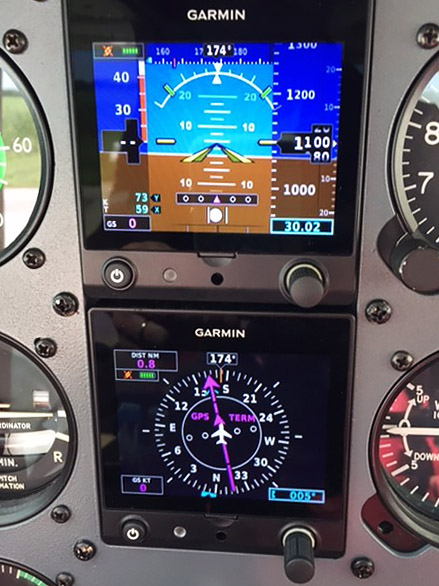
However, during the ESP demonstration, the system-induced resistance as we strayed to the edge of the flight envelope was less noticeable on the GFC 500 than on the 600, partly because of the greater authority available to the larger servos. Garmin engineers explained that as a result of the non-TSO’d nature of the servos, they have less authority, making it easier for the pilot to manually override inputs should that become necessary. In addition, because of Garmin’s desire to speed certification of the GFC 500 into as many models of light airplanes as possible, the servos are “detuned” to a certain extent, making them fly the airplane less crisply than the more highly tuned GFC 600 servos. Traditionally, autopilots must be certified in individual models, which often takes months per model. Garmin hopes to make the autopilot available under an approved model list, allowing its installation in multiple models under one approval.
Predictably, the GFC 600 flew the Bonanza very precisely and crisply in normal and emergency modes and expertly guided us through a coupled missed approach after the RNAV approach to Runway 17 at Ottawa Municipal Airport.
Base price for the GFC 600 including the pitch trim capability in a Beechcraft A36 Bonanza is $19,995; $23,995 for the Baron. The GFC 500 is $6,995 for those who already have a G5 installed. The autopilot and a G5 can be purchased together for less than $10,000. Installation times can vary considerably depending on options and what else might be installed in the airplane. Both systems will be installed in aircraft on display at the Garmin booth at EAA AirVenture in Oshkosh, Wisconsin, July 24 through 30.

